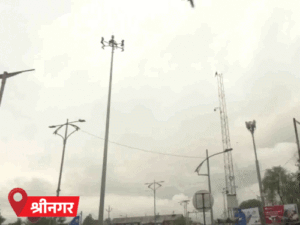Reports Describe Expanding Digital Repression in Tibet
Recent reports detail ways in which the Chinese government has instrumentalized digital connectivity to enhance its repression of Tibetans on the plateau and in the diaspora. On Wednesday, Turquoise Roof and Tibet Watch published a report titled “A Long Shadow: The expansion and export of China’s digital repression model in Tibet,” which examined procurement documents…
Recent reports detail ways in which the Chinese government has instrumentalized digital connectivity to enhance its repression of Tibetans on the plateau and in the diaspora. On Wednesday, Turquoise Roof and Tibet Watch published a report titled “A Long Shadow: The expansion and export of China’s digital repression model in Tibet,” which examined procurement documents from a digital forensics firm integral to the securitization of Tibetans’ digital networks. From the report’s executive summary:
Recent procurement documents reveal that Meiya Pico, a Chinese state-owned digital forensics firm, will provide an offensive cyber operations training environment and digital forensic laboratory to the Tibet Police College in Lhasa. This development underscores the Chinese government’s strategic investment in advanced Public Security Bureau (PSB) training infrastructure in Tibet and highlights Meiya Pico’s integral role in meeting these specialized requirements.
[...] Over the past decade, Meiya Pico has become a cornerstone of China’s digital surveillance complex. From developing covert phone spyware apps and forensic hacking devices for police, to building big-data platforms that mine email communications, Meiya Pico’s technology has been deployed at the front lines of repression in Xinjiang and Tibet. The company was identified as presenting a significant risk to the national security of the U.S. in 2019 and placed on its Entity List alongside companies like iFlytek and SenseTime – citing involvement in human rights abuses against Uyghurs in Xinjiang.
[...] Meiya Pico is typical of this ecosystem in that it serves a dual role: enabling police surveillance on the home front in the PRC’s frontier regions, and the export of China’s digital repression model abroad. Whether through equipping PRC police in Tibet’s historic and cultural capital, Lhasa, with remote intrusion techniques or training foreign police forces, Meiya Pico exemplifies the global ambitions of China’s surveillance and security industry. [Source]
The digital realm has long been a target and instrument of state surveillance in Tibet. In CDT’s 2023 Cloud Cover report, we found that local and provincial Tibetan governments have spent over 55 million yuan on Police Geographic Information Systems (PGIS) technology over the past two decades. Other reports have covered how the Chinese government has expanded digital surveillance and DNA collection in Tibet. On Sunday, Human Rights Watch published a report about the increasing number of arrests of Tibetans for their internet and phone use. It described how this phenomenon has grown in tandem with police offering cash rewards for informing on fellow citizens, expanding manual phone searches on a mass scale, forcing Tibetans to download a government “anti-fraud” app that allows for backdoor government surveillance, and imposing restrictions on religious practice:
The full scale of such arrests and prosecutions is unknown, as Chinese authorities do not disclose official data for political offenses. The more than 60 reported cases appear related to an increase in government surveillance during this period, including through mass phone searches and the use of mandatory phone apps with built-in government surveillance, as well as a tightened regulatory regime on data and religion.
“For Tibetans, simply using a cellphone has become dangerous, and everyday activities like posting a humorous video or contacting loved ones abroad can bring arrest, detention, and torture,” said Maya Wang, associate China director at Human Rights Watch. “Tibetans, particularly those living in remote areas, once celebrated the arrival of cellphones so they could stay in touch with friends and family, but their phones have effectively become government tracking devices.”
[...] In many cases, those arrested were accused of keeping “banned content” on their phones or sharing it online. Such “banned content” typically includes references to Tibetan religious figures, particularly the exiled spiritual leader, the Dalai Lama, and expressions of pro-Tibetan sentiment. Chinese authorities have applied the ambiguous language of the law broadly: in one case, a man was arrested for setting up a WeChat group celebrating the birthdays of 80-year-old Buddhist monks. The police said it was “illegal” to form such a chat group “without permission.” [Source]
A prime example of this sort of government repression took place earlier this month following the death of influential Tibetan Buddhist leader Tulku Hungkar Dorje. After Chinese authorities announced his death on April 2, they interrogated and detained local Tibetans who posted photos and messages online mourning his death, placed his monastery in Golog prefecture of Qinghai Province under round-the-clock police surveillance, and conducted random inspections of locals’ phones. Tulku Hungkar Dorje went missing in August 2024 after being harassed by Chinese authorities for his work on the preservation of Tibetan language and culture, and for allegedly snubbing the Chinese government-installed 11th Panchen Lama during the latter’s visit to his monastery. He was detained in Vietnam last month and reportedly died the day he was handed over to a visiting Chinese police squad. Five Tibetan monks, accompanied by Chinese embassy officials, were shown his face for two minutes but not allowed to see other parts of his body.
The Chinese government’s efforts to suppress Tibetan language and culture, particularly via Chinese schooling, have attracted growing media attention. Harold Thibault from Le Monde recently traveled to Golog prefecture, the location of Tulku Hungkar Dorje’s monastery, and reported how state boarding schools “sever [the] roots” of Tibetan children. He described the story of a 14-year-old girl named Dolma, who at age seven was sent to one such boarding school located more than 12 hours from her home in Sichuan:
[E]verything suggests that the project is at least as political as it is educational. It aims to integrate these students into Chinese society to assimilate them further, to the detriment of their mother tongue and local culture. In these high schools, located in cities with a predominantly Han Chinese population, most classes are taught in Chinese, and patriotic education permeates everyday life.
[...] Given Dolma’s young age, her mother had asked an older girl sent to the same boarding school to look after her before her departure. But they were not placed in the same dormitory and rarely saw each other. Dolma felt very lonely. At such a distance, it was unthinkable to return home on weekends, so she spent eight months a year away from her family. She could only make the journey for the nearly two months of winter vacation (between the Gregorian New Year and the Tibetan New Year) and the two months of summer vacation. “When I returned, the first weeks, I no longer understood the dialect spoken by my family; I had to re-learn it in a way. A distance was created, and we lost our closeness,” she recounted from another country where she now lived.At school, Chinese was the main language. There was indeed a Tibetan class, but the teacher seemed to come from a region so far from hers that she could not understand him. Political education, however, was central. “We were taught to love China, that China protects the Tibetans, that China is the best country,” the teenager recounted.
[...] The subject is a sensitive one for China. Upon leaving the regional airport, Le Monde’s reporter was followed by at least three cars and five individuals, plainclothes agents sharing the same hotel in the evening, the same breakfast, and then ensuring at the terminal that he took a return flight. [Source]





